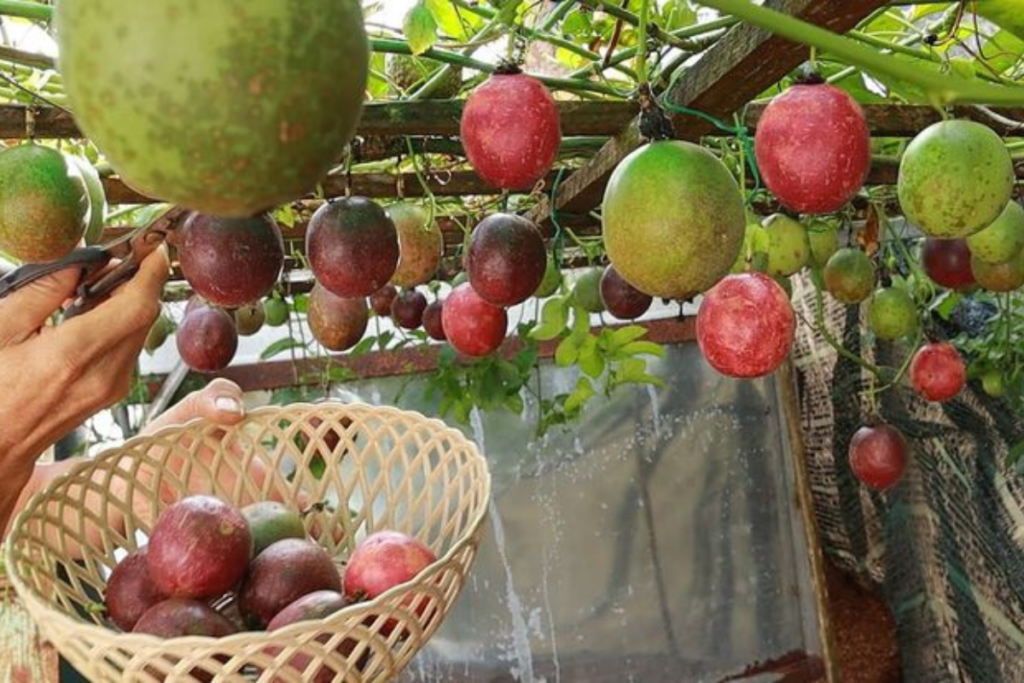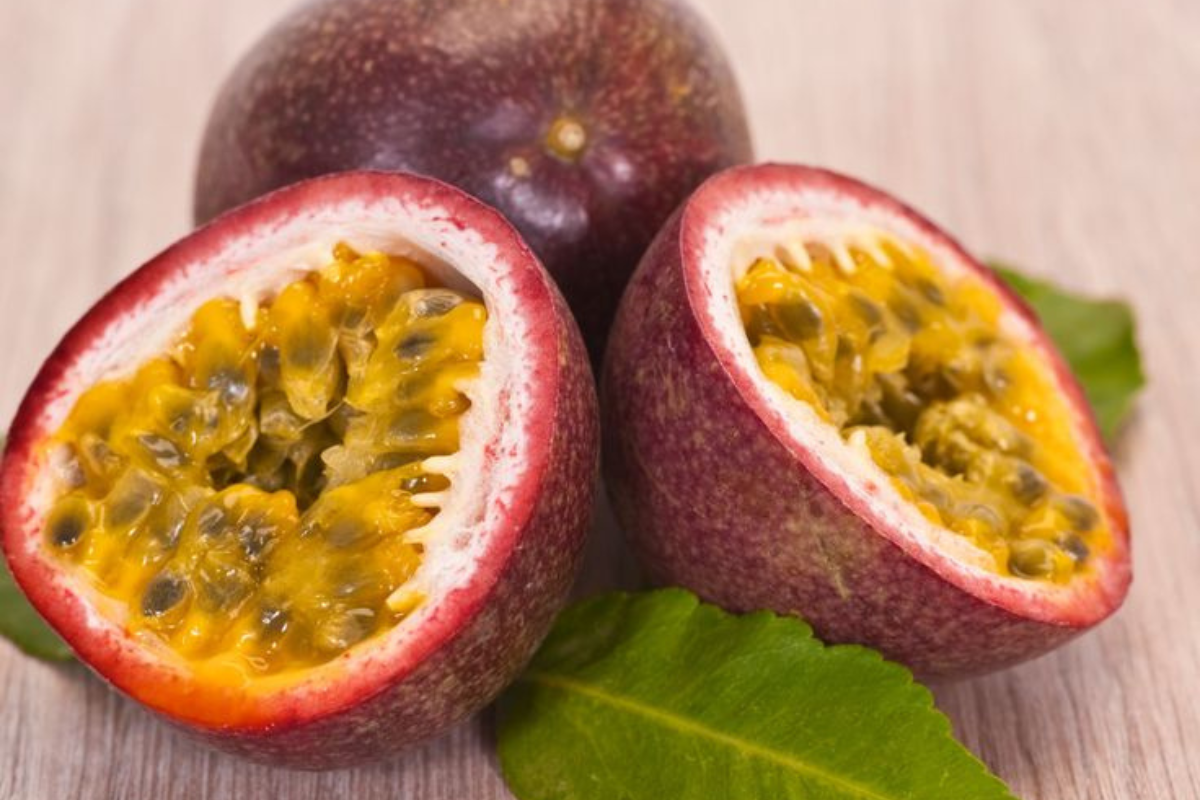Passion fruit is a tropical delight with a unique flavor and numerous health benefits. Surprisingly, it’s easy to grow at home, even in small spaces, by using containers. Follow this comprehensive guide to cultivate your own passion fruit plants.
Step 1: Choose the Right Container
– Use a large container with a capacity of at least 10 gallons for optimal root growth.
– Ensure the container has drainage holes to prevent waterlogging.
Step 2: Prepare the Soil

– Passion fruit thrives in well-draining soil with a slightly acidic to neutral pH (6.5–7.0).
– Mix equal parts garden soil, compost, and perlite or sand to create an ideal growing medium.
Step 3: Choose a Variety
– Popular varieties include Passiflora edulis and Passiflora ligularis. Select one that suits your climate and taste preferences.
Step 4: Planting
– From seeds: Soak seeds for 24 hours, then plant them half an inch deep in soil. Water consistently until germination (2–4 weeks).
– From seedlings: Transplant healthy seedlings into the container when they’re 6–8 inches tall.
Step 5: Provide Support
Passion fruit vines are climbers. Install a trellis or support in the container and train the vines to grow vertically.
Step 6: Care for Your Plant
– Sunlight: Place the container in a spot that gets 6–8 hours of sunlight daily.
– Watering: Keep the soil consistently moist but avoid overwatering.
– Fertilizing: Use a balanced, slow-release fertilizer every 4–6 weeks during the growing season.
– Pruning: Regularly prune dead or overcrowded branches to encourage airflow and sunlight penetration.
Step 7: Harvesting
– Passion fruits are ripe when they change color (purple, yellow, or red) and develop a slightly wrinkled texture.
– Gently twist the fruit off the vine and store it at room temperature or in the fridge.
With proper care, you’ll enjoy fresh, homegrown passion fruits in no time—perfect for juices, desserts, and snacks.
